The Re-Writer’s Tale
“The Timeless Children” changes everything we thought we knew about Doctor Who.
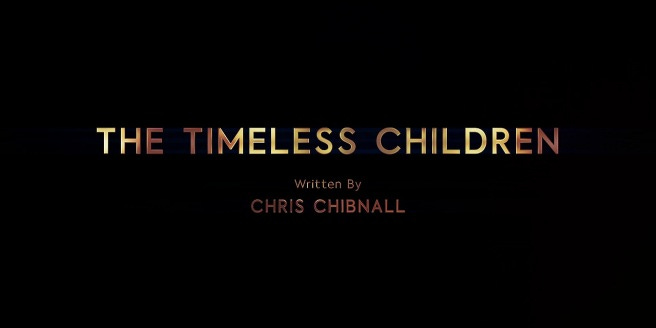
Doctor Who
“The Timeless Children”
Series 12, Episode 10
Written by Chris Chibnall
Directed by Jamie Magnus Stone
Starring Jodie Whittaker, Tosin Cole, Mandip Gill, and Bradley Walsh
Guest Starring Alex Austin, Seylan Baxter, Matt Carver, Rhiannon Clements, Sacha Dhawan, Julie Graham, Ian McElhinney, Jake Nwogu, Patrick O’Kane, and Jo Martin
65 minutes
Original broadcast 1 March 2020
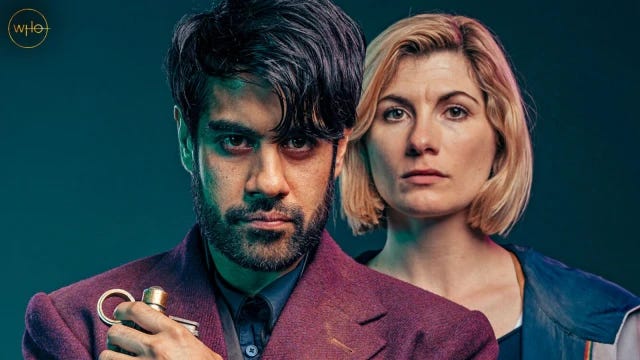
1. This Is the End?
The phenomenon known as the “season finale” has accrued so many expectations since television began broadcasting commercial drama in the late 1940s and early 1950s that the term season finale now denotes a separate narrative form that, I argue here, is also a genre unto itself. The final episode of any program’s televisual season is the place for unexpected alliances, stunning revelations, and incredible developments to occur at a pace and density that not only defy logic but also flout the measured tempo and reserved tone we commonly associate with good, solid storytelling.
Doctor Who has embraced the unrestrained energy of the best (or is that worst?) season finales since its earliest days, with Classic Who (1963-1989) occasionally reaching absurd heights (or is that depths?) when concluding one year of the Doctor’s adventures throughout space and time. The original program’s serial structure almost compelled this outcome, meaning that going for broke at season’s end was a risk that, when it paid off, resulted in terrific drama.
See, for instance, 1981’s heartbreaking serial Logopolis, which brings Season 18 to a thrilling and tragic conclusion as the Fourth Doctor (Tom Baker) sacrifices himself to save the universe from destruction at the hands of the Master (Anthony Ainley), an action that triggers Four’s regeneration into Peter Davison’s Fifth Doctor.
Davison’s exit in 1984’s equally impressive The Caves of Androzani is often misremembered as one of Classic Who’s best-ever season finales, principally due to Davison’s superb performance throughout its four episodes. His final moments as the Fifth Doctor are so bracing that the arrival of Colin Baker’s cantankerous Sixth Doctor does nothing to diminish them. Androzani, however, is in fact Season 21’s penultimate story, with the actual season finale being the serial that follows it.
The Twin Dilemma may be the Sixth Doctor’s first full adventure, but it conveniently illustrates what happens when a season ender seems to go haywire. Readers of Doctor Who Magazine have thrice voted The Twin Dilemma as the franchise’s worst-ever story—in separate polls taken in 1998, 2009, and 2014—despite Baker’s fine work in assuming the role of the Doctor from Davison, to say nothing of Nicola Bryant’s good performance as companion Peri Brown. Both actors help redeem ripe dialogue, but this four-part story is far from the unwatchable morass that its reputation suggests. Indeed, I don’t agree with DWM’s voters about The Twin Dilemma’s quality, while my affection for Colin Baker (and his irascible Sixth Doctor) shall always remain high.
New Who’s season-finale track record is better, bolder, and more consistent than the old show, although, in fairness, the old show produced 26 full seasons that averaged 26 half-hour episodes every year—except for the early days, when 40 to 45 episodes per season was the norm! These 694 installments (or, roughly, 300 hours of television) would fill 12 complete days and nights for the hardy soul who accepts the challenge of binge-watching them all without eating, sleeping, or doing anything else.

Mercifully for us, each of New Who’s eleven seasons (running from 2005 to 2018) fashions a good final act rather than limping to an ignominious end, even if Series 6’s crazy-in-an-okay-way “The Wedding of River Song” wobbles enough (before regaining equilibrium in its final 20 minutes) that writer Steven Moffat comes as close to breaking this winning streak as anyone ever has.
Chris Chibnall’s first season finale, Series 11’s “The Battle of Ranskoor Av Kolos,” is a good-but-not-great capper to his inaugural year as New Who’s showrunner. This entry offers an imaginative storyline and memorably bizarre imagery (including five planets compressed to basketball size), as well as good character work for the Thirteenth Doctor (Jodie Whittaker) and two of her three companions: Ryan Sinclair (Tosin Cole) and Graham O’Brien (Bradley Walsh).
“Ranskoor Av Kolos” unfortunately gives Mandip Gill’s Yasmin “Yaz” Khan, one of my favorite-ever Who companions, less to do than merited. Even if Series 11’s third, fourth, fifth, and sixth outings (respectively, “Rosa,” “Arachnids in the UK,” “The Tsuranga Conundrum,” and “Demons of the Punjab”) highlight Yaz’s personality and background more fully than other installments, the remainder rely upon Gill’s lovely performance to make Yaz a brighter onscreen presence than do their teleplays. Yaz (and Gill) deserved better, although “Ranskoor Av Kolos” is a fine-enough final hurrah for the Thirteenth Doctor’s first year at the TARDIS’s controls that I can’t (and shan’t complain too much.
Since Series 12 reaches its finish line with “The Timeless Children,” how well does this entry preserve New Who’s season-finale batting average? To extend the metaphor, does swinging for the fences score a home run, a base hit, or a foul ball? This tenth episode—the second half of the two-parter that began with “Ascension of the Cybermen”—may qualify as the third-and-final installment of a trilogy that “The Haunting of Villa Diodati” inaugurated two entries ago, but the question on everyone’s mind is: How good is “The Timeless Children” really?
The answer depends, as always, upon one’s perspective, but it’s safe to say that Chibnall’s exploration of the Timeless Child backstory first teased in Series 11’s second installment—2018’s “The Ghost Monument”—has divided New Who fans more than any other creative decision he’s made since taking over as showrunner from Steven Moffat.
That’s a fancy way of saying, “Buckle up, dear reader,” since evaluating “The Timeless Children” means a bumpy TARDIS ride ahead.

2. In Memory Green?
“The Timeless Children” audaciously rewrites the Doctor’s (and Doctor Who’s) backstory to provide tremendous food for thought, even if the endless fan debates, recriminations, and fights provoked by this installment’s events now seem inescapable. No matter how admirable Chibnall’s authorial ambitions may be, “The Timeless Children,” by the end of its sixty-five-minute running time, showcases both his great strengths and occasional weaknesses as a writer. The former outrun the latter, but the Timeless Child plotline so thoroughly shakes up the Thirteenth Doctor’s sense of her own history, as well as the longtime viewer’s sense of Doctor Who’s history, that divided emotions are inevitable.
This installment picks up where “Ascension of the Cybermen” ends by having Sacha Dhawan’s deranged Master force the Doctor to cross the Boundary, a vortex that allows fleeing human beings to escape the Cybermen by travelling to other parts of the universe. The Master does so by threatening to reduce Ryan Sinclair, Ko Sharmus (Ian McElhinney), and Ethan (Matt Carver) to small dolls with a device called the Tissue Compression Eliminator, itself a relic of Classic Who (indeed, this weapon was first seen in 1971’s Jon Pertwee / Third Doctor serial Terror of the Autons).
When the Doctor accompanies the Master across the Boundary, Ryan immediately moves to follow them, but the Cybercarrier piloted by Yaz, Graham, Ravio (Julie Graham), Bescot (Rhiannon Clements), and Yedlarmi (Alex Austin) arrives in the skies above them, spelling trouble for all concerned since Patrick O’Kane’s Lone Cyberman, the relentless Ashad, has managed to bring the carrier’s thousands of Cyberwarriors under his control.
This development leads to running battles between the Cybermen and their principal quarry (Ryan, Ethan, and an energized Ko Sharmus), who outfox their metal-encased foes by evading them inside the maze-like tent structure that serves as Sharmus’s base of operations. McElhinney is even better here than he is in “Ascension of the Cybermen,” taking the fight to the Cybermen with a glint and a glee that recall the actor’s best moments as Ser Barristan Selmy in David Benioff’s and D.B. Weiss’s HBO adaptation of George R.R. Martin’s novel Game of Thrones. Director Jamie Magnus Stone stages these scenes with minimal fuss and maximum tension so that, despite their high stakes, they remain fun to watch.
Back on the Cybercarrier, Graham devises a clever plan to hide himself, Yaz, and the other refugees inside Cyberman armor to aid their escape to the planet’s surface. One of Series 12’s most suspenseful scenes unfolds when Ashad, alerted to the human presence in his midst, scrutinizes both Yaz and Graham as they, cocooned in armor, try to remain silent while standing stock still inside a Cyber alcove. The sight of both companions holding their breath as Ashad leans close to their armored faces—with the camera cutting between Ashad and Yaz, then between Ashad and Graham—is remarkably effective. Indeed, its editorial simplicity is this scene’s greatest strength, causing palms to sweat as these moments of near-terror stretch on forever.
The real action, however, happens on Gallifrey, where the Master quotes Percy Bysshe Shelley’s 1818 sonnet “Ozymandias” (“Look upon my work, Doctor, and despair”) to revel at the sight of his homeworld’s destruction. And the blasted landscape that confronts the Doctor, with the mighty Citadel of the Time Lords shattered to pieces, testifies to the Master’s unquenchable rage even if “The Timeless Children” never explains exactly how the Master accomplished this annihilation.
Why he destroyed Gallifrey, however, becomes chillingly clear when, after confining the Doctor to a paralysis field, the Master sends her consciousness into the Matrix (not the globe-spanning virtual mindscape patrolled by Keanu Reeves’s Neo in the Wachowski sisters’ cinematic tetralogy, but rather the Matrix of Time, described by the Master as “the repository of all Time Lord knowledge. A databank of every Time Lord consciousness, living and dead. Every experience and every memory—the lived history of our race”).
“The Timeless Children,” from this point forward, becomes a memory play of astounding revelations. This installment is not only a worthy example of the season finale but also a massive expansion (or is that revision?) of the Doctor’s personal background. Chibnall takes a big risk here by making the Thirteenth Doctor a passive observer of the story that the Master begins narrating, but as all faithful Whovians know, big risks, when skillfully crafted, can pay handsome returns.
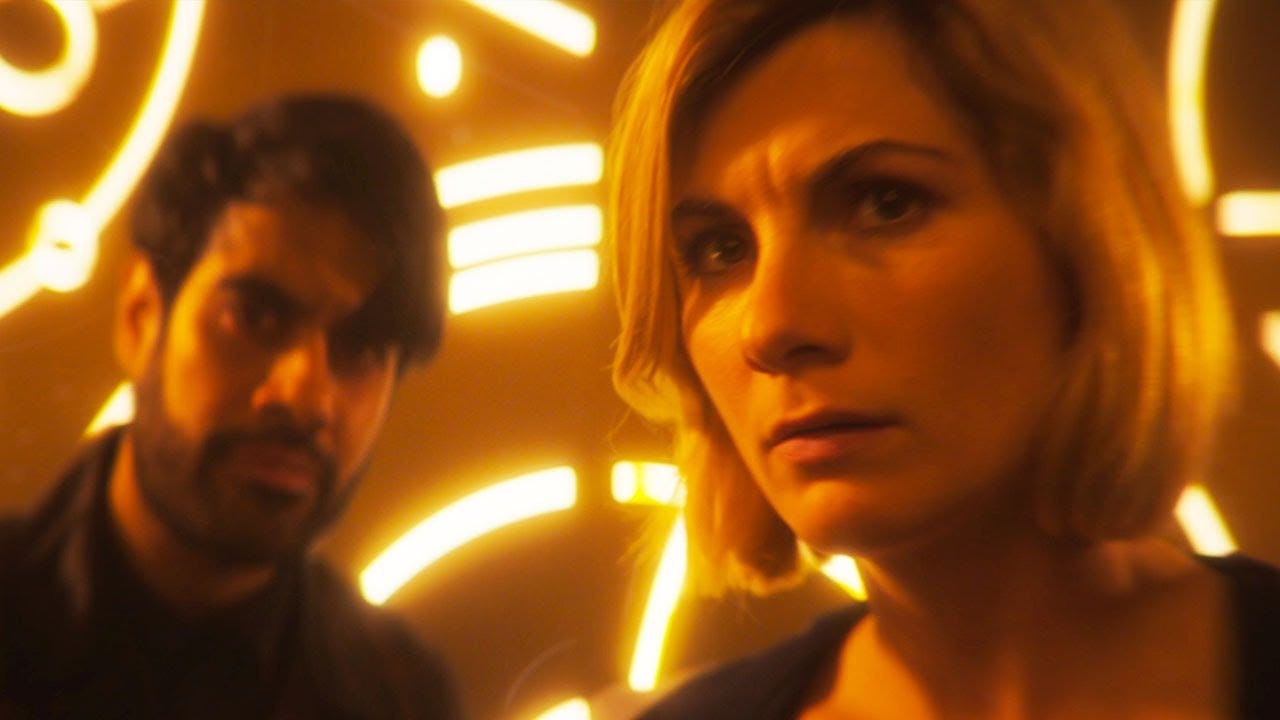
The Doctor, along with her audience, watches the Master’s tale unfold for minutes at a time, with the Master functioning as an exposition machine, or, if you prefer, as the Time Lord Expositor-in-Chief, whose story transforms him into a clear surrogate for Chibnall himself, the man who wishes to unveil a tale of extraordinary scope and staggering implications.
Some observers have criticized this structural choice—intercutting the Timeless Child’s long backstory into the episode’s other subplots—as bad writing on Chibnall’s part. The showrunner, in this assessment, makes incidents, symbols, and themes that should remain subtext into surface text, or, phrased another way, Chibnall violates one of the most fundamental rules of good fiction writing (for the page, stage, and screen) by telling us what happens rather than showing us those events.
Chibnall, in truth, hopes to have it all ways by showing and telling at the same time. He dramatizes the Master’s narration in artfully constructed flashbacks that alternate with Yaz, Ryan, Graham, and the other human refugees fighting Cybermen, but doesn’t stop here. No, Chibnall includes another major substory that sees the Master ally with, then murder Ashad to create a new species of hybrid Cybermen, accomplishing this perverse goal by placing Time Lord corpses inside Cyberman armor to create and command an army of CyberLords (or what the Doctor calls “CyberMasters”) that can never be stopped because they now possess the ability to regenerate when killed.
If this summary sounds frightfully complex, please know that it is, but please also know that Chibnall deftly weaves these disparate elements into a narrative tapestry whose mind-boggling complications are easy to follow.
As such, the central questions become: 1) How well does Chibnall tell the tale of the Timeless Child’s past? 2) How well does this account jibe with previous, established Who lore? and 3) How does this yarn affect our understanding and appreciation of the franchise as a whole? Chibnall wishes—or seems to wish—to rewrite Who’s founding stories and symbols, or, in essence, its mythology. Doing so is his right as Doctor Who’s showrunner, but Chibnall can’t be surprised that this decision would be received as good, bad, and otherwise by the program’s legions of fans, who are as charming, chatty, contentious, and disputatious a bunch of viewers as ever stalked the forests, jungles, and wilds of contemporary popular culture.

3. Out of the Blue?
Any evaluation of the Timeless Child must begin with the fact that the Master so frequently withholds, obfuscates, mystifies, manipulates, and shades the truth that, when he’s not lying to the Doctor’s face, he’s always holding back one or two key details. The Master, particularly Sacha Dhawan’s brilliantly unbalanced incarnation, is the most unreliable narrator that New Who has seen since, well, Michelle Gomez’s gloriously psychopathic Missy challenged the Twelfth Doctor (Peter Capaldi) during Series 8, 9, and 10.
Missy, of course, was the least trustworthy version of the Master since John Simm’s dangerously insane incarnation opposed the Tenth Doctor (David Tennant) in Series 3 and during Ten’s final adventure, 2009-2010’s two-part “The End of Time,” then resurfaced to confound Twelve’s and Missy’s lives in Series 10’s two-part finale, “World Enough and Time” / “The Doctor Falls.”
This caveat also forces us to question the authenticity of the vignettes that accompany the Master’s Timeless Child narration, although their superb cinematography, expert editing, and evocative music enhance their legitimacy, particularly given the tenor of Dhawan’s speaking voice, which rises from hushed tones to apoplectic rage when his mood worsens, sometimes without a moment’s notice.
The Master unveils a hidden history of Gallifrey and the Time Lords that places the Doctor not simply at its center, but at its beating heart. This tale, summarized as briefly as possible, claims that Gallifrey’s indigenous inhabitants were originally called Shobogans and, moreover, that Gallifrey was a backwater planet until a woman named Tecteun (Seylan Baxter) became the first Shobogan to develop space travel. While exploring new worlds and new civilizations, Tecteun happened upon a planet that housed a gateway marking one end of a wormhole that connected this unnamed world to another part of the universe or, perhaps, to another universe entirely.
At the base of this gateway, Tecteun found a small child, seemingly abandoned by her parents or caretakers, causing Tecteun to adopt this foundling as her own. If this narrative sounds familiar, its parallels to the Biblical account of Moses are clear, although, closer to home, it recalls the “Ascension of the Cybermen” subplot involving Brendan (Evan McCabe), whom we saw grow into a lad after Irish villagers Patrick (Branwell Donaghey) and Meg (Orla O’Rourke) adopted him. Don’t forget that Brendan joined the local police force and miraculously survived a gunshot to the chest when cornered by a frightened thief, causing Brendan to fall off a seaside cliff to the beach below, yet sustain no visible injuries.

The Master confirms that Tecteun placed a “visual filter” over the Timeless Child’s actual history—buried deep inside the Matrix but still available to anyone who searches hard enough for it—so that whomever finds it would consider this scenario little more than a trifle, or, at most, an intriguing anecdote.
In an apparently intentional bit of self-reflexivity on Chibnall’s part, this filter must extend to New Who’s audience members themselves, being keyed to their cultural expectations rather than existing as a story whose details remain the same for everyone. Why, otherwise, would the Shobogans, a species living on Gallifrey, see the Timeless Child—a young, Black girl when Tecteun first adopts her—as a white Irish boy living on what, to them, is an extraterrestrial planet they’ve never visited, namely Earth in the early or mid-twentieth century?
Chibnall, of course, may simply prefer this Irish setting because its colorful, pastoral imagery contrasts all else in “Ascension of the Cybermen” and, in a rare misstep, neglects to consider carefully how Brendan’s tale affects the cosmos-spanning narrative that “The Timeless Children” tells.
Yet considering how extensively the Timeless Child storyline interrogates the boundaries of memory, history, truth, and identity, such carelessness seems unlikely and, moreover, unlike Chibnall, who’s proven himself adept at constructing tightly plotted narratives before his time as New Who’s showrunner, including his stints running Broadchurch (2013-2017), the first two seasons of Law & Order: UK (2010-2011), and the first two seasons of the New Who spinoff Torchwood (2006-2008).
A likelier explanation credits Chibnall for interpolating the Timeless Child’s story twice, with Brendan’s tale serving as a screen or stand-in for multiple Timeless Child incarnations. After all, the Master’s narration exposes the Timeless Child as the first victim of Gallifreyan arrogance, with this young girl becoming Tecteun’s perpetual lab rat after her adoptive mother returns them to Gallifrey.
While playing near a sheer cliff, the Timeless Child struggles with a young boy over a toy, only to tumble off the rockface to the beach below when the boy yanks the toy from her hand. After Tecteun arrives to discover her adoptive daughter dead, she (Tecteun) is astonished to see golden energy stream from the girl’s body, changing her appearance and renewing her life. Regeneration, in other words, isn’t native to Gallifrey, but to whatever place and whatever species the Timeless Child represents.

Tecteun begins studying her child to uncover the mystery of regeneration and, in a montage that replays the general outline of Mary Shelley’s 1818 novel Frankenstein, experiments upon the child by provoking multiple renewals. Director Jamie Magnus Stone and editor Rebecca Trotman masterfully cut this scene together, which ends when Tecteun discovers the genetic basis of her child’s bodily rejuvenation, splices the relevant material into her own genetic code, and provokes the first Shobogan regeneration by testing the process on herself.
This Tecteun (sometimes called the First Tecteun) is a white woman who transforms into a Black man (Jake Nwogu) after regenerating. He begins building Gallifrey into a powerful world whose inhabitants discover time travel and build the Citadel to be the palace of their planet’s ruling elite. Tecteun splices the regeneration code into the Citadel’s dwellers, but restricts their ability to renew themselves to twelve changes (or thirteen lives overall). The Master concludes this history lesson by sneering at the elitism on display: “The Timeless Child became the base genetic code for all Gallifreyans within the Citadel. The civilization which renamed themselves, with characteristic pomposity, Time Lords.”
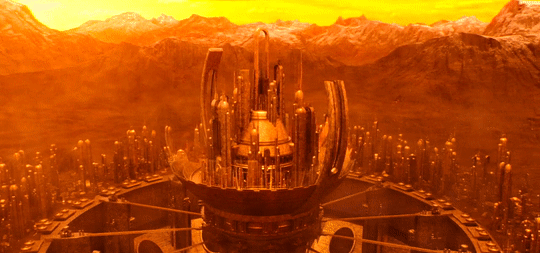
The Doctor doesn’t interrupt the Master as he tells (and they watch) this tale, but Jodie Whittaker’s face is a living canvas onto which she paints curiosity, surprise, amazement, sadness, and even dread. It’s a superb performance that, in small moments, reveals the Doctor silently plotting her escape even as she pays heed to the Master’s incredible story of Gallifrey’s secret past.
Dhawan is just as good here, taking center stage, as the Master always does. When he reveals that the Doctor is the Timeless Child, his wrath at confessing this truth is frightening not because he screams, but because he stops himself from screaming: “You always behaved like you were different, like you were—like you were special. And you were. You can see—you can see why I’m angry. A little piece of you is in me. All I am is somehow because of you, and believe me when I say, I cannot bear that.”
The Doctor’s first impulse is to pronounce the Master’s tale a lie and to deny being the Timeless Child, a reaction that matches more than a few viewers, who object to this news as an unnecessary revision of Doctor Who’s mythology that Chibnall springs on his audience without warning. This final criticism is wrong insofar as Chibnall has prepared us for it since Series 12’s “Spyfall” premiere, dropping several hints along the way, with the unveiling of Jo Martin’s Fugitive Doctor (in the episode “Fugitive of the Judoon”) confirming that an unknown incarnation of the Doctor exists.
I salute the structural intricacy of “The Timeless Children,” as well as Chibnall’s adroit manner of moving from the Master’s narration to the companions fighting the Cybermen, then cutting to the Master—who’s divided his consciousness between the Matrix and real life—learning that Ashad’s body houses something called the Death Particle. According to Ashad, this creation of the Cyberium can destroy all organic life, which will leave the Cybermen to be fully mechanized by Ashad, thereby fulfilling his mad vision of a universe populated only by machine life that ascends to perfection and rules all creation.
Rather than becoming a mishmash of notes that doesn’t harmonize, Chibnall’s tight rein over this elaborate narrative prevents “The Timeless Children” from descending into the cacophonous dross that some audience members have declared it. Chibnall engineers a captivating modification of Who legend that re-visions how we see and think about the Doctor, the Time Lords, and the many truths about Gallifrey that we’ve so long taken for granted.
Considering that reactionary political parties around the globe are struggling to foreclose any revaluations (or re-evaluations) of their nations’ complex histories in a quest to cement their own hidebound, xenophobic, and racist interpretations of the past into immutable public memory, I find Chibnall’s project in “The Timeless Children” to be indispensable and, yes, timely.
Yet how good is it overall?
Therein, my friends, lies to rub.
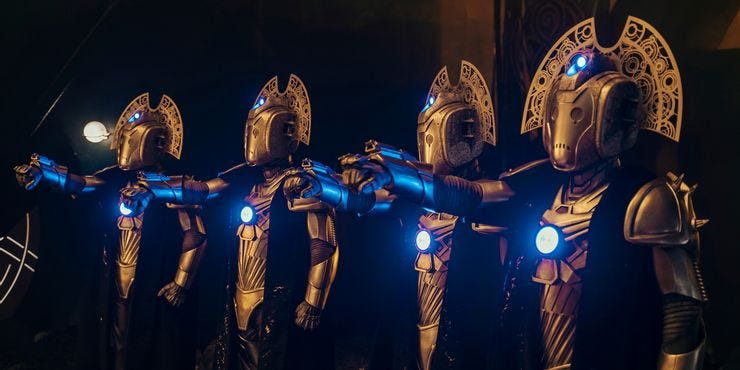
4. The Good, the Bad, and the Good?
My praise for Chibnall’s “Timeless Children” project derives from the fact that Whovians have been here before. Both Russell T. Davies and Steven Moffat fashioned similarly pervasive transformations of New Who’s backstory during their eras as showrunner, while Classic Who changed the show’s narrative state of play when new producers were hired to oversee the program or when serving producers wished to shake Doctor Who out of the formulaic storytelling into which it periodically fell.
The British Broadcasting Corporation’s (BBC’s) punishing production calendar—demanding a new episode every week for half the year—meant cranking out so many installments per season (on relatively small budgets) that Classic Who’s writers didn’t always have time to write teleplays that refreshed Doctor Who’s form or content, but instead had to be quickly finished to satisfy the unforgiving shooting schedules. Chibnall, as “The Timeless Children” makes clear, had far more breathing room and thinking time to plan his first two seasons at New Who’s helm, with results that are impressive in many ways, but troubling in others.
For all its cleverness, the Master’s Timeless Child narration occasionally slows the episode’s pace to a crawl when paying stricter attention to the Master’s negotiations with Ashad and to his (the Master’s) construction of the CyberLords would help more forcefully sell this nuttiest aspect of “The Timeless Children.” How, for instance, does the Master so quickly accomplish these goals on his own?
Having saved the corpses of the Gallifreyans he slaughtered—including, we must assume, children—is wicked enough, but the Master’s depravity in putting these cadavers inside Cyberman armor would surely take longer than this installment allows, even if the first few CyberLords that the Master builds then assume the nasty labor of preparing their fellows for mass conversion by evacuating the existing organic elements and wiring Time Lord carcasses into the now-empty Cyber shells. Chibnall adapts Frankenstein for his own purposes here, but more attention to how the Master accomplishes this process, rather than having it magically work because the final act demands that it work, would secure this episode’s faultiest element.
The Master’s scheme, despite it’s unlikely timeline, sickly extrapolates Missy’s gruesome plan, in Series 8’s two-part finale, to install human corpses into Cyberman armor to create her own Cyber army. Chibnall pays close attention to Steven Moffat’s work in “Dark Water” and “Death in Heaven,” particularly the existence of Matrix data slices that house a virtual-reality afterlife called the Nethersphere (seen in most previous Series 8 outings); that allow Missy to upload and to rewrite the consciousness of recently deceased people; and that provide the basis for the Dhawan Master’s Timeless Child revelations (hidden so deeply inside the Matrix that it takes him all the time that passes between the end of “Spyfall: Part Two” and “Ascension of the Cybermen” to uncover and decode it).
Plus, as the Master tells the Doctor in “The Timeless Children,” the remainder of Gallifrey’s history has been redacted so completely that even he cannot recover it, which not only illustrates how bottomless Time Lord paranoia about publicizing their origins is but also implies that the Nethersphere collapse mentioned by Clara Oswald’s (Jenna Coleman’s) boyfriend Danny Pink (Samuel Anderson) at the end of “Death in Heaven” takes some of this history with it.
Chibnall pays equal homage to Russell T. Davies’s work in the finales of Series 1 (“Bad Wolf” / “The Parting of the Ways”) and Series 4 (“The Stolen Earth” / “Journey’s End”) by having the Doctor harangued by a powerful nemesis for actions that run contrary to her (or his) stated ethical principles. In “The Timeless Children,” the Master’s disgust at the Doctor’s centrality to Gallifreyan society mocks her mantra that she’s just a traveller who helps out where she can, whereas, in “The Parting of the Ways,” the Emperor of the Daleks (Nicholas Briggs) derides the Ninth Doctor’s (Christopher Eccleston’s) supposed cowardice in refusing to activate the Delta Wave generator he’s created to destroy the massive Dalek fleet invading Earth because doing so will kill all human beings on the planet’s surface, as well.

In “Journey’s End,” Dalek creator Davros (Julian Bleach) arranges events so that the Tenth Doctor’s “soul is revealed.” As Davros says to Ten about the companions he collected during Series 1-4, “The man who abhors violence, never carrying a gun, but this is the truth, Doctor. You take ordinary people and you fashion them into weapons. Behold your Children of Time transformed into murderers,” which also describes the Thirteenth Doctor’s effect on her three companions’ lives. Ryan, Yaz, and Graham have learned to fight a variety of foes throughout Series 11 and 12, preserving life whenever they can but destroying it when necessary.
Davies, furthermore, revised the entire franchise’s backstory by making the Ninth Doctor into the “Last of the Time Lords,” the only survivor of the Last Great Time War and the man who brought this all-consuming conflict (between the Daleks and the Time Lords) to its grisly end by committing double genocide (i.e., the Doctor annihilated every member of both species, or, more accurately, thought that he did).
Steven Moffat then rewrote this new New Who mythology in the franchise’s Fiftieth Anniversary Special (“The Day of the Doctor”) by creating a previously unknown incarnation of the protagonist existing between the Eighth (Paul McGann) and Ninth Doctors, a “mayfly Doctor”—to employ Moffat’s description—played fabulously by John Hurt, who joins the Tenth and Eleventh (Matt Smith) Doctors in their successful ploy to create a parallel pocket universe that freezes Gallifrey in a single instant of time and that saves all Gallifreyans from doom.
The War Doctor, however, can’t recall this planetary rescue or his hand in assisting it after departing the field of battle, which consigns the Ninth Doctor to the survivor’s guilt that plagues him throughout Series 1 (and that niftily explains why Nine can’t recall saving Gallifrey during his adventures).
This massive shift in New Who’s lore isn’t even Moffat’s first such alteration on a cosmic scale, as he writes Series 5’s two-part finale (“The Pandorica Opens” / “The Big Bang”) to require Eleven to “reboot the universe” after enemies from Classic and New Who—Atraxi, Autons, Chelonians, Cybermen, Daleks, Draconians, Drahvins, Hoix, Judoon, Silurians, Slitheen, Sontarans, Sycorax, Terileptils, Uvodni, Weevils, and Zygons—form an alliance to prevent a prophecy (predicting that the Doctor will destroy all creation) from coming true, but instead trigger the devastation they seek to avert. This predestination paradox requires the Doctor to erase himself from history to restart the universe by using the Pandorica as the heart of a new Big Bang.
The Eleventh Doctor either removes or threatens to remove himself from the memory of every sentient creature in the universe during the finales of Series 6 (the aforementioned “The Wedding of River Song”) and Series 7 (“The Name of the Doctor”), saying “I got too big . . . too noisy. Time to step back into the shadows” at the conclusion of “The Wedding of River Song.” This dialogue underscores a persistent theme that lurks just under the surface of most Doctor Who episodes broadcast since 1963, with Chibnall bringing this notion full circle in “The Timeless Children” by making the Doctor not merely central to the program named after her, but crucial to the existence of Gallifreyan society as we know it. Or, as the Dhawan Master tells Thirteen in an evocative line, “The foundling had become the founder.”
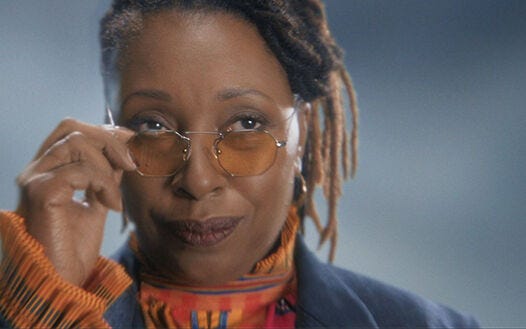
5. The End Is Nigh?
This idea occasions my greatest qualm about “The Timeless Children.” Transforming the Doctor into Who’s Chosen One certainly mirrors the Time Lords serving as the franchise’s Chosen People, but this narrative turn employs one of the most hackneyed tropes of all, one that relies upon a story told so frequently in American and British culture (popular or otherwise) that it breaks no new ground.
Indeed, this development retreads terrain at least as old as the Mesopotamian-Sumerian Epic of Gilgamesh, circa 2100 BCE, meaning we can at least say that doing so anchors the high-flying, always-fanciful Doctor Who in fertile mythological ground. Yet I can’t help feeling that the “Timeless Child as Chosen One” plot diminishes the Doctor by boxing her into conventions, expectations, and clichés so banal that Chibnall must now innovate (or riff) upon them to the point of obviating the benefits that pursuing the Chosen One storyline yields. Perhaps confining the Thirteenth Doctor to the Matrix of Time shares more in common with the Wachowskis’ Matrix films than I initially thought, making “The Timeless Children” Chibnall’s televisual retelling of these blockbuster movies.
These doubts may be unfair, especially since “The Timeless Children” is, in every other respect, a top-drawer production that brings Series 12 to a whopping good close. In the best season-finale tradition, its alliances are unexpected, its revelations are stunning, and its developments are incredible. Chibnall wisely returns Jo Martin’s Fugitive Doctor (or Ruth Doctor) to our screens to help Thirteen escape the Matrix by telling Thirteen precisely what she needs to hear when, overcome by the enormity of realizing that she’s experienced countless lives before the First Doctor (William Hartnell), Thirteen isn’t certain how to process this information. “Have you ever been limited by who you were before?,” the Fugitive Doctor asks.
This simple, yet powerful query helps Thirteen begin to understand how Brendan’s story is in fact a record of the Time Lords manipulating at least one, and perhaps many, of her earlier selves by forcing her / him / them to work for Division (or “the Division,” as it’s sometimes called), the clandestine covert-operations organization that employed Commander Gat (Ritu Arya) in “Fugitive of the Judoon” and that erased Ruth’s memories to conceal all knowledge of its meddling in other worlds’ affairs, which directly contravenes the Time Lords’ official policy of non-interference.
Even so, Jo Martin’s appearance is the most welcome of all “Timeless Children” developments. The Ruth Doctor’s stern regard for Thirteen softens to compassion before she offers words that offer the key to escaping the Matrix of Time: “Get out of here. I know this place has blown your mind. Maybe you should return the compliment.”
The Doctor then blasts memories of all her previous incarnations, companions, and enemies in reverse chronological order, going back before the First Doctor not only to the Fugitive Doctor but also to the eight faces that the Fourth Doctor sees during his mind duel with the renegade Time Lord Morbius (Michael Spice) in the Season 13 serial The Brain of Morbius, canonizing them as versions of the Doctor that precede the First Doctor’s life. Their legitimacy had remained a much-debated fan question ever since The Brain of Morbius’s 1976 premiere, but Chibnall settles this issue once and for all in “The Timeless Children.”
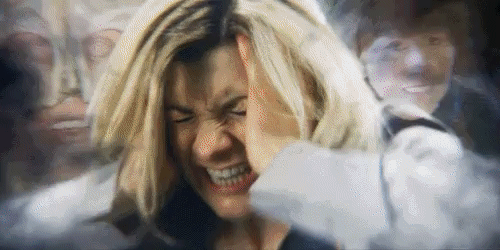
Chibnall, moreover, nicks this tactic—of the Doctor employing memories to overload the Matrix—from Series 6’s underrated “The Rings of Akhaten,” written by Luther creator Neil Cross to include a remarkable showdown between the Eleventh Doctor and the sentient planet Akhaten that sees Eleven give one of his most impassioned speeches (and Matt Smith deliver one of his most superb performances) when the Doctor humbles the hungry, memory-ingesting Akhaten by offering his lives-long store of recollections to it.1 This strategy works just as well in “The Timeless Children,” with the ensuing montage of the Doctor’s memories rushing by so fast that it’s worth pausing, then advancing each moment frame by frame, to see how expertly Rebecca Trotman knits these franchise-spanning shots together.
Thirteen’s escape coincides with her companions arriving on Gallifrey to rescue her, which allows Ko Sharmus to sacrifice himself for the greater good. The Doctor extracts the Death Particle from Ashad’s tissue-compressed corpse and then places it into an explosive device that must be manually triggered before sending Ryan, Yaz, Graham, Ravio, Ethan, and Yedlarmi back to 2020 Sheffield in one of the spare TARDISes remaining on Gallifrey.
Ko Sharmus refuses to go, grabbing the bomb from Thirteen and telling her that he’ll use it to destroy the CyberLords. She escapes in a second TARDIS just as the Master, furious that his plans are about to be thwarted, orders his assembled CyberLords to blast Sharmus, but not before Sharmus unleashes the Death Particle, which lays even greater waste to Gallifrey (and seems to destroy the Master, although this character’s ability to survive everything that the franchise’s writers throw at him assures us that both the Master and Sacha Dhawan will return before the Thirteenth Doctor regenerates into her successor).
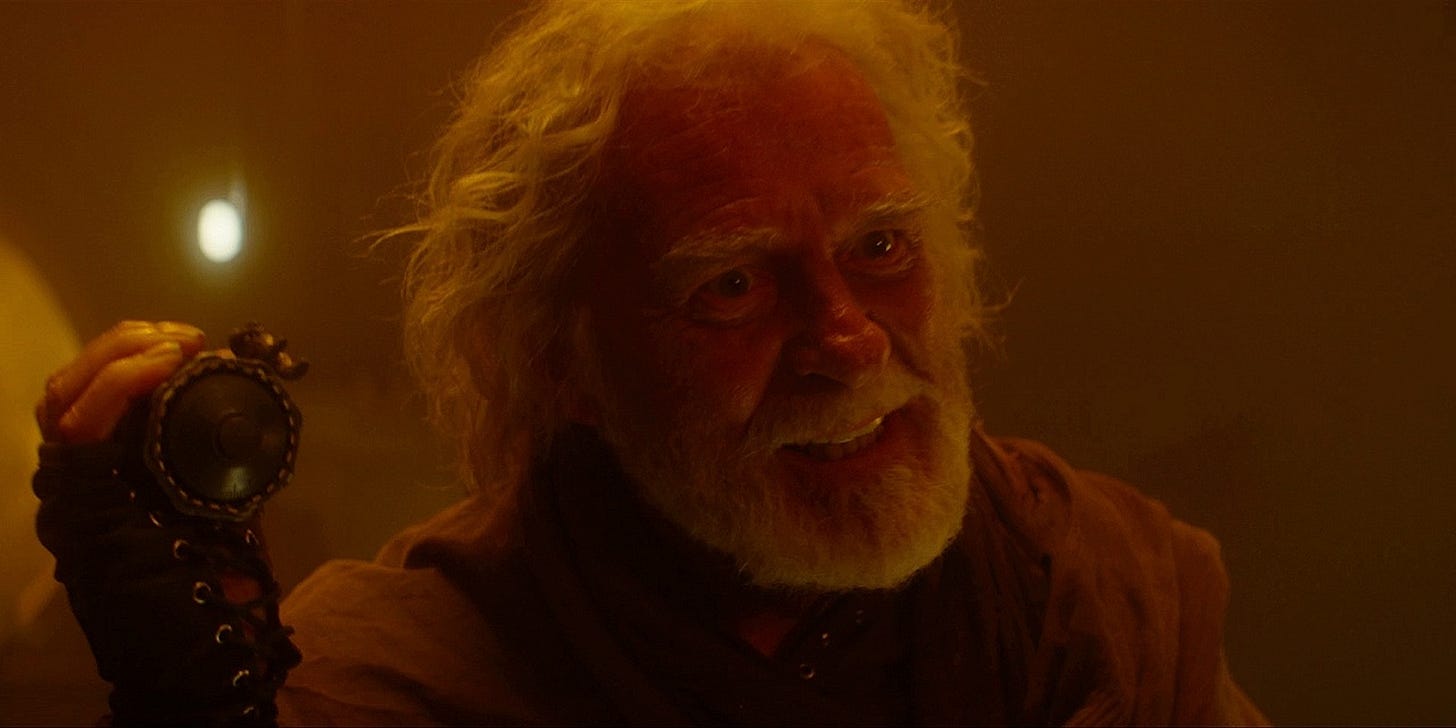
Ian McElhinney is a joy to watch as Ko Sharmus meets his fate with the exuberant courage that he’s demonstrated throughout Series 12’s finale and that we expect of a true hero. Chibnall gifts both the character and the performer an exit that earns them every bit of acclaim they’ve received for one of New Who’s best death scenes.
Chibnall winds down this hectic 65 minutes by seeing the Thirteenth Doctor return to her beloved TARDIS to contemplate the extraordinary discoveries she’s made about herself, then pulls the carpet from underneath us by having a Judoon cold-case unit beam into the TARDIS, arrest the Doctor as a fugitive from justice, sentence her to life in prison, and teleport her to a jail cell inside a prison carved into an asteroid located somewhere in deep space.
Chibnall even has the Thirteenth Doctor repeat the word “What?!” three times, with greater incredulity each time, just as Russell T. Davies made the Tenth Doctor say this motto in Series 2’s “Doomsday,” in the 2006 Christmas Day Special “The Runaway Bride,” in Series 3’s “Last of the Time Lords,” in the 2007 Children in Need minisode “Time Crash,” and in the 2007 Christmas Day Special “Voyage of the Damned.” This grace note of continuity with New Who’s past ends “The Timeless Children” with the gallows humor that Chibnall adeptly laces throughout this dense, tense, and mostly excellent finale. My misgivings are small compared to my esteem for an installment that has drawn backlash from some Whovians, but that gives me so much to ponder that it’s provoked the longest review of any television episode (Doctor Who or otherwise) I’ve yet written.
That’s normally a good sign, as well as a good place to leave this mammoth appraisal of “The Timeless Children.” The cast and the crew again surpass themselves, bringing Chibnall’s script to vibrant life by telling a story that shakes our knowledge of the Doctor and her franchise to their foundations. That’s peak season finale and, for good measure, near-peak Doctor Who, so I hope this episode’s detractors reconsider their responses (rather than entrenching their opinions). “The Timeless Children” may never be as universally beloved as other Doctor Who finales, but this outing remains a prototypical example of its genre and, happily, a damned fine yarn on which to conclude Series 12.
FILES
NOTE
The Thirteenth Doctor’s memory blast also recalls writer Dan McDaid’s three-part, 2008 Tenth Doctor comic strip Thinktwice, first published in Doctor Who Magazine (Issues #400, #401, and #402). Whether or not Neil Cross was familiar with McDaid’s work when writing “The Rings of Akhaten” or Chris Chibnall knew about Thinktwice while scripting “The Timeless Children” remains unknown.




